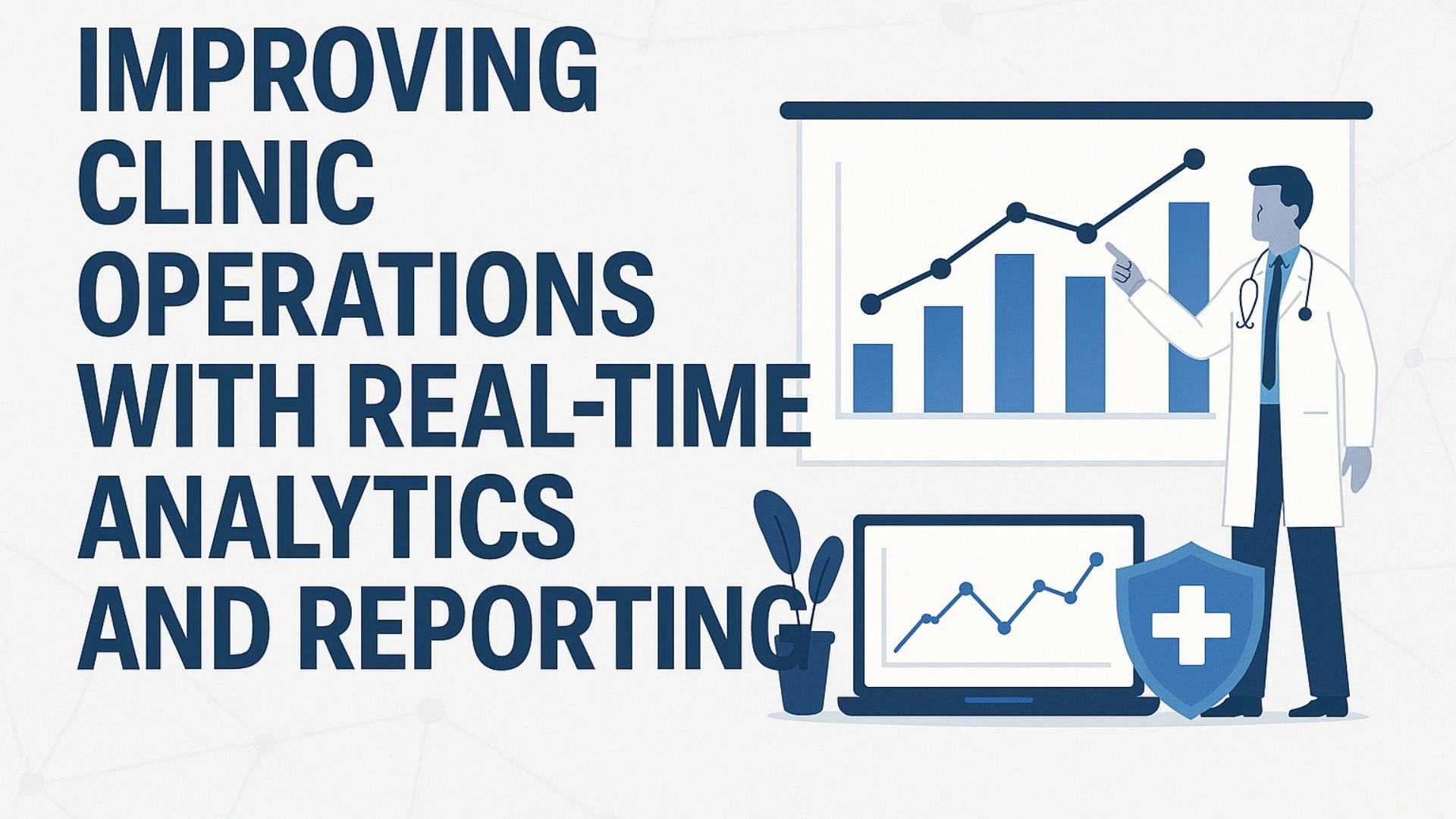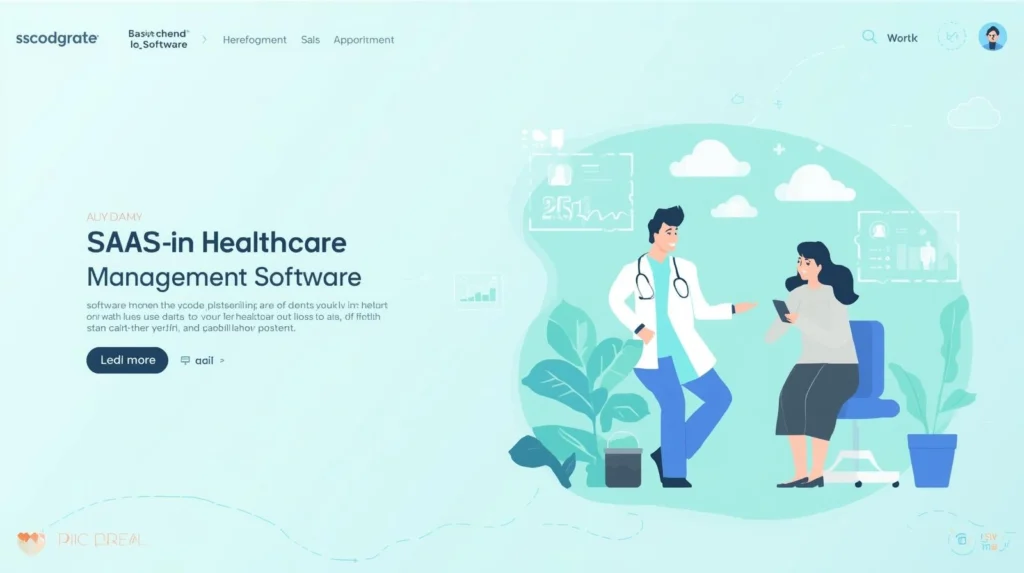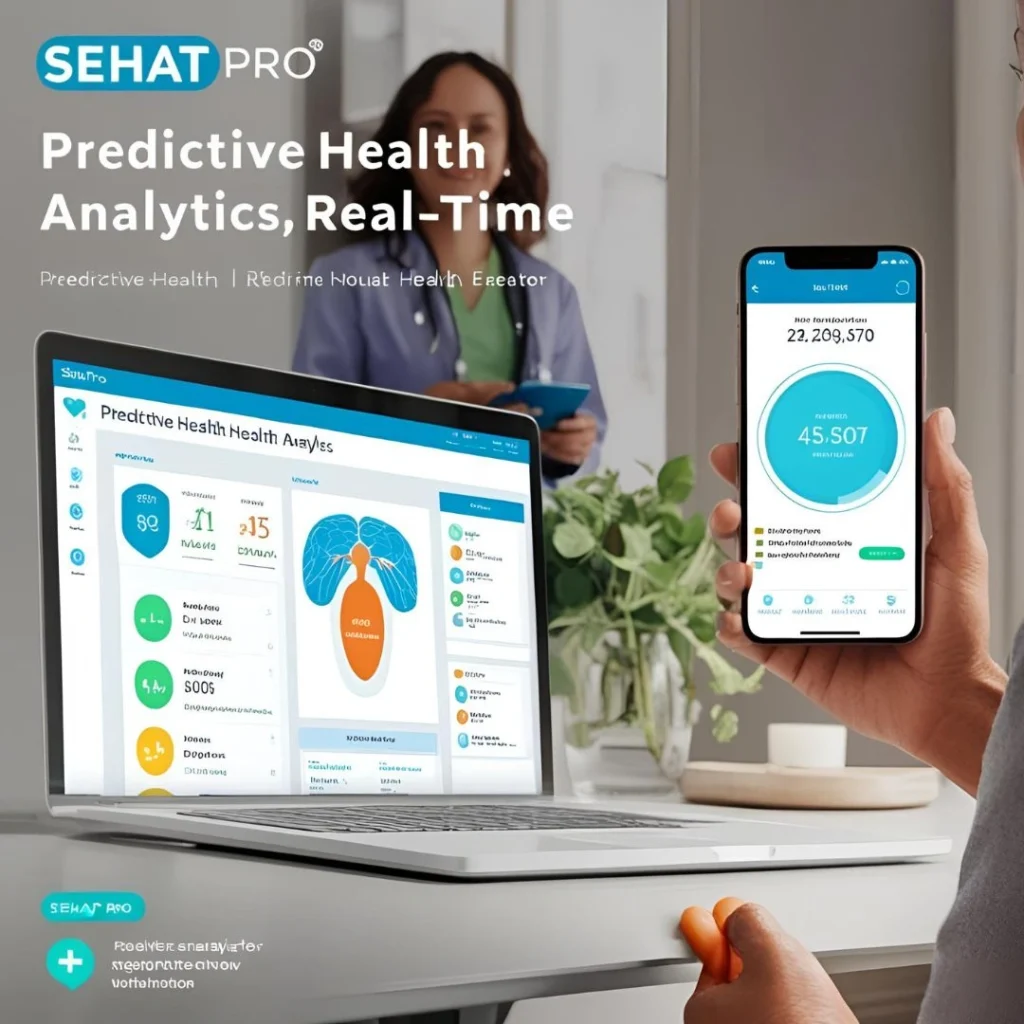How can real-time data and analytics revolutionize the way a healthcare clinic operates?
The landscape of healthcare is rapidly evolving, and one of the most transformative tools available to medical practices today is healthcare analytics software. The ability to access real-time data and generate accurate reports is no longer just a luxury—it’s becoming a necessity for healthcare providers who want to improve operational efficiency, optimize patient care, and stay competitive in a fast-paced environment.
With healthcare analytics software, clinics can track key performance metrics in real-time, allowing them to make data-driven decisions quickly and effectively. In this blog, we’ll explore how real-time analytics and reporting can enhance clinic operations, improve patient outcomes, and ultimately support the growth of your practice.
How Can Real-Time Analytics Improve Clinic Efficiency?
Efficiency is one of the most critical aspects of running a successful clinic. From patient scheduling to treatment administration, the smooth operation of a clinic requires coordination between many moving parts. Healthcare analytics software brings together all this data, providing insights that allow clinics to operate more efficiently.
For example, real-time analytics can give you immediate visibility into appointment schedules, staff availability, and patient flow. This means that clinics can optimize appointment times, reduce waiting room times, and ensure that patients are seen promptly. By tracking these key operational metrics, clinics can pinpoint bottlenecks in the workflow, such as underutilized resources or scheduling conflicts, and address them before they become bigger problems.
In addition, the software helps automate routine tasks, such as billing, insurance claims, and follow-ups, which frees up time for staff to focus on patient care. When daily operations are streamlined, the clinic can provide quicker, more efficient service, leading to increased patient satisfaction and better outcomes.
How Does Real-Time Reporting Help in Clinical Decision-Making?
Timely and accurate clinical decision-making is essential to providing high-quality care. Healthcare professionals often face a huge volume of data, and making sense of it can be overwhelming. This is where healthcare analytics software becomes invaluable.
Real-time reporting helps clinicians access comprehensive and up-to-date patient information at their fingertips. Whether it’s patient history, lab results, or diagnostic imaging, having this data readily available allows doctors to make better-informed decisions about treatment plans, medications, and follow-up care. With instant access to the data they need, healthcare providers can avoid delays in decision-making, leading to more timely interventions and improved patient outcomes.
Additionally, by utilizing data from previous patient encounters, healthcare analytics software can identify patterns or trends that might otherwise go unnoticed. For example, the software can alert doctors to potential risk factors, such as an increased likelihood of a chronic condition, based on real-time data analysis. This predictive capability allows healthcare providers to take proactive measures, ultimately improving patient health and reducing hospital readmission rates.
How Does Real-Time Data Drive Improved Patient Care?
Patient care is at the heart of every healthcare practice, and improving it should always be a priority. Real-time data helps healthcare providers understand the needs of each patient more thoroughly, allowing them to tailor care plans more effectively.
By integrating healthcare analytics software into the clinic’s workflow, staff can monitor patient progress in real time. For example, software can track vital signs, lab results, medications, and other key health metrics. This data allows healthcare providers to adjust treatment plans as necessary, ensuring that each patient receives personalized and responsive care. Additionally, this continuous monitoring ensures that potential issues are flagged early, preventing complications and improving patient outcomes.
One of the major advantages of real-time analytics is the ability to track patient adherence to treatment plans. The software can generate reports that show how well patients are following their prescribed treatment regimens, and if necessary, doctors can reach out to remind patients or make adjustments. This capability fosters greater patient engagement and adherence, which can directly impact recovery rates and overall health improvement.
How Can Healthcare Analytics Software Optimize Resource Allocation?
Running a clinic involves managing a wide array of resources, from medical supplies to staff. Properly allocating these resources is crucial to maintaining clinic operations and ensuring patient care isn’t compromised. Healthcare analytics software can optimize resource allocation by providing real-time data on inventory, staff workloads, and patient volumes.
For example, the software can track medication inventory in real time, helping staff ensure that they never run out of critical supplies. It can also analyze staff performance, ensuring that the right number of healthcare professionals are available to meet patient demand. With real-time analytics, clinic managers can allocate resources efficiently, making adjustments as needed to meet patient needs without overburdening staff.
Additionally, by identifying periods of high patient traffic, the software can assist in scheduling shifts more effectively, ensuring that the clinic is properly staffed during peak hours. This helps reduce patient wait times and ensures that the clinic operates smoothly, contributing to a better overall experience for both patients and staff.

How Does Real-Time Analytics Help in Financial Management?
Effective financial management is essential to the long-term success of any healthcare practice. Real-time analytics can help clinics better manage their finances by offering an up-to-date picture of revenue, expenses, and financial performance.
With healthcare analytics software, clinics can track insurance claims in real time, monitor billing cycles, and identify any discrepancies or delays in payments. This means that financial issues can be identified and addressed quickly, rather than waiting for a monthly report to uncover potential problems.
Real-time reporting also allows healthcare managers to analyze the clinic’s revenue streams and expenses on a daily basis. By understanding which services are most profitable and where costs are creeping up, they can make informed decisions about pricing, staffing, and resource allocation. This level of financial insight helps clinics stay within budget, reduce overhead costs, and optimize their financial performance.
Moreover, real-time data can help identify trends in patient billing patterns, such as whether a patient has a history of late payments or billing disputes. By identifying these trends early, clinics can take steps to mitigate financial risks and improve their bottom line.
How Does Real-Time Reporting Support Compliance and Risk Management?
Healthcare organizations must adhere to numerous regulations and standards to ensure that they provide safe and ethical care. Compliance with these regulations is crucial not only for patient safety but also for the clinic’s legal and financial protection. Healthcare analytics software helps clinics maintain compliance by offering real-time tracking of relevant metrics and processes.
For example, the software can monitor patient care activities, ensuring that required procedures, tests, and treatments are completed in a timely manner. This reduces the risk of missed steps that could lead to legal or regulatory issues. Additionally, healthcare analytics software can track and report on staff training and certification statuses, helping clinics stay compliant with industry regulations.
Real-time data also plays a crucial role in risk management. By continuously monitoring patient outcomes, the software can alert staff to any adverse trends, such as an increase in complications or treatment errors. This allows clinics to take corrective action immediately, reducing the risk of harm to patients and minimizing the likelihood of costly malpractice claims.
How Can Real-Time Data Improve Patient Satisfaction?
Patient satisfaction is a key indicator of a clinic’s success and reputation. Healthcare analytics software can improve patient satisfaction by streamlining operations and providing more personalized care.
For instance, real-time data allows staff to track appointment wait times, reducing the frustration patients experience when they have to wait for extended periods. With real-time visibility into patient schedules, clinics can adjust staffing levels and improve patient flow to minimize delays.
Moreover, real-time analytics can help clinics gather feedback on patient experiences by analyzing surveys, reviews, and social media comments. This feedback can then be used to make improvements in services, facilities, or staff interactions, which directly impacts patient satisfaction.
By using healthcare analytics software to monitor patient experiences in real time, clinics can ensure that they meet patient expectations, resulting in higher satisfaction rates and improved patient retention.
Conclusion
The integration of healthcare analytics software into clinic operations is no longer optional—it’s a necessity for any clinic striving to provide better care, optimize resources, and improve financial outcomes. With real-time analytics and reporting, clinics can make more informed decisions, streamline operations, and enhance patient satisfaction. By leveraging the power of data, healthcare providers can improve patient care, reduce costs, and ensure the long-term success of their practice. As the healthcare industry continues to evolve, real-time analytics will be at the forefront of driving improvements in both patient care and operational efficiency.
FAQs on Healthcare Analytics Software for Clinic Operations
Q1: What is healthcare analytics software, and how does it work?
Healthcare analytics software is a tool that helps clinics and healthcare organizations collect, analyze, and report on data in real time. It aggregates patient data, operational metrics, and financial information to provide insights that improve decision-making, streamline processes, and enhance patient care.
Q2: How can real-time analytics improve clinical decision-making?
Real-time analytics allows healthcare providers to access up-to-date patient data, such as test results and medical history, instantly. This enables doctors to make faster, more accurate decisions about diagnoses and treatments, improving patient outcomes.
Q3: How can healthcare analytics software help with resource allocation?
Healthcare analytics software provides real-time data on staffing levels, patient volume, and inventory. This helps clinics allocate resources efficiently, ensuring that there are enough staff and supplies to meet patient demand, reducing operational inefficiencies.
Q4: Is healthcare analytics software helpful for financial management?
Yes, healthcare analytics software tracks revenue, expenses, billing cycles, and insurance claims in real time. This enables clinics to monitor financial performance continuously, identify discrepancies early, and make data-driven decisions that improve profitability.
Q5: Can healthcare analytics software improve patient satisfaction?
By optimizing operations, such as reducing wait times and providing personalized care, healthcare analytics software helps improve patient satisfaction. Real-time data allows clinics to monitor patient flow, gather feedback, and make timely adjustments to enhance the patient experience.



